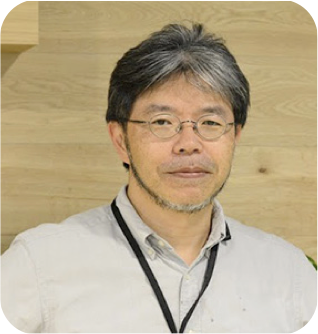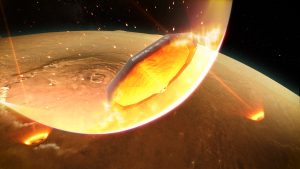
Global space news: ESA announces ‘Voyage 2050’ themes for the agency’s large-scale missions
In June, the European Space Agency (ESA) announced three themes that will guide the selection of their largest class of space mission for launch between 2035 – 2050.
It is a time-scale that seems to stretch into the far future, but the challenges of space mean mission development is measured in decades. ISAS Director General Kuninaka Hitoshi reflects over the similar time period at ISAS that saw the success of the Hayabusa mission that returned the first asteroid sample to Earth.
When I was in my 30s, ISAS was active in planning future missions to embark on planetary exploration using the M-V rocket, which was under development at that time. Ten years later, Hayabusa was launched to deep space, and it took a further ten years to produce scientific results. Inspired by ESA’s V2050 and the US decadal survey, I am enthusiastic to plot the course that ISAS will take through the 2030s and 40s.
Kuninaka Hitoshi, ISAS Director General
Referred to as the “Voyage 2050” program, the themes selected by ESA run from habitability to the beginnings of our Universe. Selection is no easy task, explained Fabio Favata, ESA Coordinator for Astronomy and Fundamental Physics missions. Similar to ISAS, ESA take a bottom-up approach, with mission ideas put forward by scientists from ESA member state institutes, that are then distilled into the chosen themes.
The European scientific community has such broad interests. We put a committee of scientists together for peer review and they issued a recommendation, which was not at all easy because of course, there is no right recommendation! It is true of any healthy competition, you always hopefully have way more than one good candidate.
Fabio Favata, ESA Coordinator for Astronomy and Fundamental Physics missions
Three themes were suggested and approved by the ESA member states. ESA plans a flagship mission for each theme, with ideas for the mission specifics again proposed by the scientific community.
The first theme for Voyage 2050 is titled “Moons of the giant planets” and focusses on the potential for life in the oceans under the icy exterior of moons orbiting Jupiter and Saturn.
Yano Hajime in the Department of Interdisciplinary Science is particularly interested in this area, and notes that ESA’s plans ties in strongly with previous and up-coming missions, both by ESA itself and other international agencies.
Following legacies and prospects by missions such as the Pioneers, Voyagers, Galileo, Cassini-Huygens, Juno, JUICE, Europa Clipper, and Dragonfly, “The Moons of Giant Planets” theme from ESA’s Voyager 2050 exclusively recommends to explore the three ocean worlds of Titan, Enceladus, and Europa to search for habitability and biosignatures, and the one volcanic world of Io to study mass and energy exchange between the moon interior and surface environment. The report also encourages joining for an international mission to the ice giants Uranus and Neptune. All of the above show synchronicity with on-going efforts for NASA’s next planetary decadal survey in 2023-2032, while China has their own Galilean satellite exploration program under selection.
Yano Hajime, Department of Interdisciplinary Science
Yano explains that travel to the outer Solar System is technologically challenging, with the distances that need to be traversed requiring extremely long mission timescales. The region of the giant planets is beyond the so-called ice line, where water can freeze into ice and aid the formation of hidden ocean worlds. This makes the difficult trip of high scientific value, and Yano is keen for Japan to develop missions to join this exploration.

Outer planet exploration as of today demands powerful launchers, novel power/thermal/telecom spacecraft designs, decades of development/operation period, and large-class resources and ESA has a proven history of cross-generational missions like Rosetta/Philae and BepiColombo. It is now clear that the world trend of deep space exploration in the coming decades flows to the outer planet region of the Solar System, far beyond the snow line. We must react right to find out how Japan can swim to a blue ocean of outer planet exploration by ourselves or with international partners in the new era.
Yano
The second theme of ESA’s Voyage 2050 is called “New physical probes of the early Universe”. Missions for this theme are set to explore new ways of investigating the very earliest era of our Universe.
One such method mentioned in the theme is the use of gravitational waves. Gravitational waves are created whenever an object with mass accelerates. However, it has only been recently that we have been able to build detectors sensitive enough to pick these up or detect their influence.

Izumi Kiwamu from the Department of Space Astronomy and Astrophysics is part of the team for Japan’s KAGRA ground-based gravitational wave detector and also the future JAXA mission, LiteBIRD, which aims to hunt for evidence of very early gravitational waves back when the Universe was rapidly expanding. He is excited that a look at the Universe’s early days may reveal a deeper understanding of physics.
Probing the early Universe is a key for obtaining a deeper understanding of the spontaneous birth of our Universe. Japan’s KAGRA can see gravitational waves from events across the local Universe and we hope LiteBIRD will see evidence for the first moments after the cosmic inflation. Explorations of the early Universe may even provide a unique hint for consistently connecting the gravitational and quantum physics. ESA’s focus on new physical probes of the early Universe are therefore very exciting!
Izumi Kiwamu, Department of Space Astronomy & Astrophysics
The third theme of ESA’s Voyage 2050 is “From temperate exoplanets to the Milky Way”. The focus of missions here will be to explore the potential of observations at mid-infrared wavelengths, which can probe dusty regions of the Galaxy blocked to optical light, and also potentially detect radiation emitted from planets in orbits similar to the Earth.
Yamada Toru in the Department of Space Astronomy and Astrophysics agrees that infrared observations have huge potential for characterising planets that might support life.
It is a very central question and science goal to characterise the atmosphere of ‘temperate’ exoplanets, which have equilibrium temperatures low enough allow the presence of liquid water on their surfaces to find ‘bio-signatures’ in their spectra. There are good candidates of bio-signatures in mid-infrared wavelengths, such as ozone, methane and nitrous oxide.
Yamada Toru, Department of Space Astronomy & Astrophysics
Yamada also notes the strong connection between the ESA Voyage 2050 themes and JAXA upcoming missions, citing both LiteBIRD and the plans for JASMINE; an infrared space telescope that will peer into the centre of our Galaxy, which is heavy in dust. JAXA and ESA already have an established history of collaboration with both JAXA-led and ESA-led missions, allowing the potential for the agencies working together to maximise the scientific output of their space exploration.
It is exciting that ESA announced the direction for the ESA large missions toward 2050, tackling the most central questions in astrophysics and planetary sciences. These aim to understand origins of the Universe and cosmic structure, as well as the possibility of life in the Universe. It is a goal very much in common with what ISAS astrophysics missions challenge.
For the announced ESA Voyage 2050 line-up, I consider that there will be many chances of synergistic or complementary cooperation between Japanese and European space scientists. LiteBIRD, which is the selected JAXA-led mission to study the relic of primordial gravitational waves in the cosmic microwave background (CMB) produced during cosmic inflation, also studies the physics of very early Universe. JASMINE, which is the selected JAXA-led mission for infrared astrometry, also studies the structure and formation history of the central region of our Milky Way. In fact, ESA and European scientists participate JAXA XRISM X-ray mission, and JAXA and Japanese scientists are now working for the study of Athena, which is the ESA L-class X-ray mission for the 2030s, lined-up to be launched before the Voyage 2050 concepts. Such fruitful complementary or synergistic collaboration should also be developed for the future missions.
Yamada

It is a sentiment that ESA’s Favata thoroughly agrees with.

I consider (ESA and JAXA) a real success story in terms of international collaboration. Both ESA contributing to JAXA mission and JAXA contributing to ESA missions. It’s clearly a two-way road which is exactly what a good collaboration should be. We are looking forward to extending this into the far future and see where we can go from there.
Favata
Favata explains that international collaboration reflects the nature of the scientific community, which is built around discussions and sharing of ideas.
There are so many reasons for international collaboration. First of all that the scientific community is highly integrated; scientists talk with each other, many if not most scientists travel, and an international collaboration reflects this first and foremost. Also, it allows us to build bridges; long-term missions together
Favata
He remarks that the importance of diversity has risen to the forefront of debates in recent years, as results from across a broad range of disciplines demonstrate the benefits to be gained from a wide range of experiences and backgrounds. This applies to cultures as well.
Diversity also applies in putting together our different cultures and bring together our different approaches to implementing missions. ISAS in particular has a fascinating history and very long history of space science in a more academic context than ESA’s, so we have a lot to learn from each other from my point of view.
Favata
Another mission that ESA is involved with is the JAXA-led Martian Moons eXploration (MMX) mission, which is scheduled to launch in 2024 JFY and return a sample from Mars’s moon, Phobos. In addition to ESA, DLR (Germany), CNES (France) and NASA are contributing scientific instruments and a rover to the spacecraft. Project Manager Kawakatsu Yasuhiro says the key to such global collaborations is that the entire team to share a vision, which is developed through extensive discussions to share ideas.
With MMX, Japan will stand shoulder-to-shoulder with other countries on the frontier of space science. To realise big scientific projects with international partners, first, we have to share a scientific vision with other countries. Then, we have to form our strategy to define and build our role in this vision. On this strategy, we will establish Japan’s position in the worldwide space science community through frequent and open discussion with our partners, and by proving our expertise to be useful in global collaborations.
Kawakatsu Yasuhiro, MMX Project Manager

In addition to the benefits of a diverse group in taking a challenging mission to success, collaborations also maximise opportunities for scientists and give a wide range of interests in each community scope for development. Next year, ESA plans to launch JUICE, a mission to the Jovian moon Ganymede that was selected as part of the agency’s previous “Cosmic vision” 2015- 2025 plan. ISAS scientists are involved with multiple instruments on the spacecraft, allowing key roles to be played in a mission that would be too large for JAXA to manage alone. Likewise, JAXA’s expertise in small body exploration in both the Hayabusa missions and MMX is a valued addition in Europe, notes Favata.

JAXA is doing wonderful missions that we’re not doing! Look at the Hayabusa missions! Asteroid sample return: first in the world! I can only say “congratulations”; I’m really impressed! With JAXA’s MMX mission, it’s Mars sample return done on a small budget. That’s an amazing mission and collaborating also offers the opportunity to be part of this endeavour to European science.
Favata
With the themes decided, ESA will progress to considering individual mission ideas that fulfil the themes aims and hope to see the first flagship launch in the beginning of the 2040s.
The ESA Voyage 2050 program presents an exciting vision for global space science, hitting on key topics that are of global interest. As commented by Hayabusa2 Project Manager Yuichi Tsuda, we are all looking forward to seeing what the next decades will bring.
Europe’s vision for the future in 2050! Planning deep space exploration missions requires an “eye” to see far into the future in both space and time. For planetary exploration, the exploration of the moons of Jupiter and Saturn is a sweet spot for space science. ESA are also looking to invest in exploration technology for the next century; I am excited to see what this will achieve. In Japan, I hope we too will continue over the coming decades to create exciting Solar System exploration.
Tsuda Yuichi, Hayabusa2 Project Manager
“Global space news” is a chance for us to highlight important developments across the world and share our excitement of these achievements.
Further information:
ESA’s Voyage 2050
KAGRA gravitational wave detector website
JUICE-Japan mission website
Athena X-ray Observatory
XRISM X-ray Imaging and Spectroscopy Mission
Hayabusa2 mission website
MMX mission website
LiteBIRD mission website
JASMINE infrared mission website

 Previous Post
Previous Post Next Post
Next Post






